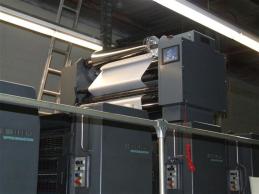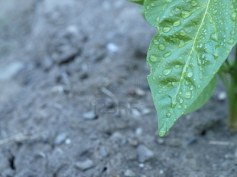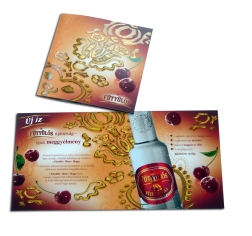Great quality print products are getting increasingly popular in the printing industry. A constantly developing requirement for surface finishing techniques has become noticeable over the past few years. You will need an appealing design and top-quality printing and finishing to distinguish yourself out of your competition! Gorgeous print products generate a winning impression, deeply influencing the choices buyers make.
Upgrades in the technological options backed up by presses, including inline surface finishing in a single pass, are also fuelling this development. Advancement has been significantly evident in the section of coatings. There are now a large number of special, user-friendly coatings with new features. They deliver all manner of effects, giving designers ever better liberty of expression.
Cold Foil Finishing
Cold foil is an magnificent innovative print technology that enables you to apply metallic foil, in-line, at press speed, in an endless spectrum of colors. Cold Foil Finishing can be applied using two conventional offset printing units. The first unit uses its inking unit and also an offset printing plate to apply glue either as a spot application or to the complete sheet.
The second, actual cold foil unit incorporates take-up and take-off units for putting on the foil. Along with the sheet, the foil is fed into the nip between the blanket and the impression cylinders and applied by pressure to the regions of the printing stock covered with glue. Right after the backing is taken away, the metal layer remains on the sheet. The remaining printing units are used to overprint the sheet. CMYK and spot colors can be printed to the sheet and over the foil. The result is a fantastic foil effect.
Drip-off and Hybrid Coatings
Drip-off
Standard inks are used for the process colors. A special-effect print varnish is applied in the final printing unit to the sections that are to have a matt appearance. Then, the coating unit is used to apply a conventional full-area high-gloss coating that drips off the spots previously given a matt coating. This maintains the matt effect of these parts and offers the remaining spots a gloss surface.
Hybrid
Hybrid or UV inks are utilized for the process colors. A further printing unit is used to utilize a UV special-effect print varnish to the areas of the picture that will have to have a matt visual appeal. Next, the coating unit is used to implement a full-area UV high-gloss coating. Because a UV high-gloss coating is used for hybrid applications, a greater gloss intensity may be achieved compared to a drip-off application produced by using a conventional, water-based high-gloss coating. With hybrid applications, however, the structure of the matt effect is much stronger than with drip-off applications.
Hybrid and UV Spot Coatings
Hybrid
UV inks are being used for the process colors. An extra printing unit applies a hybrid special-effect print varnish to the regions of the picture that will have to have a matt appearance. After that, the coating unit is used to apply a full-area UV high-gloss coating. The matt effect is produced exactly where the gloss coating \”sinks\” into the special-effect print varnish.
UV
UV inks spot-coated with a UV matt varnish in a additional printing unit are used for the process colors. Next, the coating unit is used to put a UV high-gloss coating as a second spot coating. This evidently separates the matt and gloss sections. As a UV high-gloss coating is utilized for the hybrid application, the gloss level is comparable to that accomplished with the UV application. The matt effect in the hybrid application, nonetheless, has a surface which is less smooth compared to the UV application, recognized as a hybrid effect.
























